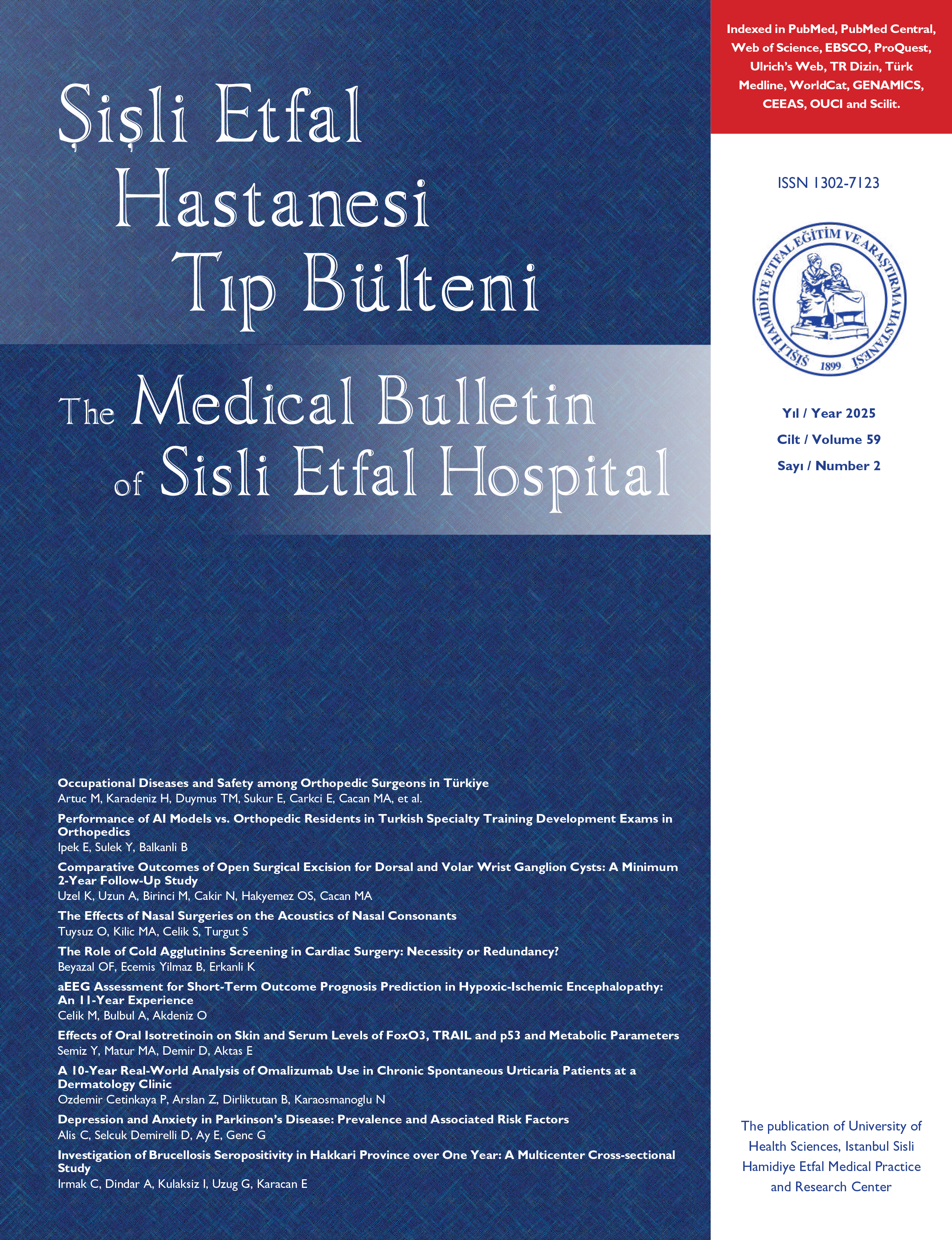
Evaluation of Young Patients With Myocardial infarction
Ebru Em, Fatih Borlu, A. Özgür Öztürk, Gülçağrı Erol, Hülya Tanes, Güliz DirimenThird Department of Internal Diseases, Şişli Etfal Training and Research Hospital, Istanbul, TurkeyObjective: In our study, we aimed to emphasize that the young myocardial infarction (MI) cases had different clinical and laboratory features and their therapies were important due to these differences.
Material and Methods: 46 of 466 cases, which were followed by our Coronary intensive Care Unit in between January 1999-2000 and were diagnosed as MI considering the clinical and the laboratory results, were included the study as young MI cases. The ages,genders,jobs,risk factors,seasonal distributions, localization of the infarction, the therapy modality were evaluated. Results: in our study group the presence of, being male, being working in a stressful job, smoking as one of the risk factors for the coronary heart disease, hypertension and the family history at the higher rate than the other risk factors were correlated with the prior laige studies (GISSI-2,GISSI-3) which were carried out with theyoung MI cases. The different results were the intensity in spring at the seasonal distribution, the higher incidence of the inferior localization and the less usage of thrombolytic agents on therapy rather than the expected one.
Conclusions: Recently, the thrombolytic therapy is the essential and the basic element of the therapy of MI and its positive effect, on the mortality and the morbidity at young MI cases, is more prominent. It has been thought the managements on many fields aimly the education should have been carried out to make spread this therapy which has been used less than the expected one in our country.
Genç Myokard İnfarktüsü Olgularının Değerlendirilmesi
Ebru Em, Fatih Borlu, A. Özgür Öztürk, Gülçağrı Erol, Hülya Tanes, Güliz DirimenŞişli Etfal Eğitim ve Araştırma Hastanesi, 3. İç Hastalıkları Kliniği, İstanbulAmaç: Çalışmamızda genç myokard infarktüsü olgulannın farklı klinik ve labaratuar özellikler gösterdiğini ve tedavilerinin de bu farklılıklar nedeniyle önem taşıdığını belirtmeyi amaçladık.
Materyal-metod: Hastanemiz Koroner Yoğun Bakım Ürıitesinde Ocak 1999- Ocak 2000 tarihleri arasında takip ettiğimiz, klinik ve labaratuvar sonuçlarımla göre MI tanısı almış 466 olgunun 46sı genç MI olarak çalışmaya katıldı. Olgulann yaşları, cinsiyetleri, meslekleri,risk faktörleri, mevsimsel dağılımları, infarktın lokalizasyotıu, tedavi yaklaşımları değerlendirildi.
Bulgular: Çalışma gnıbumuzda erkek cinsiyet, stresli bir meslekte çalışıyor olmak, koroner arter hastalığı açısından risk faktörlerinden sigara içimi, hipertansiyon, aile ananınezinin diğer risk faktörlerine oranla daha yüksek bulunuşu, daha önce genç MTlar üzerinde yapılmış büyük ölçekli çalışmalarla (GISSI-2, GISSI-3) uyumluydu (3), (4). Farklı olarak elde edilen sonuçlar ise mevsimsel dağılımında ilkbahar aylarındaki yoğunluk, iııferior lokalizasyonun yüksek olması ve tedavide trombolitik ajan kullanımının olması gerekenden düşük bulunuşu idi.
Sonuç: Trombolitik tedavi günümüzde MI tedavisinin temel ve vazgeçilmez unsumdur ve genç MTlarda mortalité ve morbidité üzerine olumlu etkisi daha belirgindir (5). Ülkemizde hala olması gerekenden az kullanılan bu tedavi şeklini yaygınlaştırmak için başta eğitim olmak üzere çeşitli konularda düzenlemelere gidilmesi gerektiği düşünülmektedir
Manuscript Language: Turkish



















